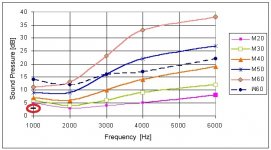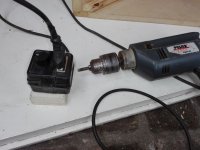Ok.
ohhh ,,,, friend I do not intend to waste time with your infima intervention in my post.
But if you want to provide some perfectly documented evidence that most people (you can put percentages) hear 1 db differences in the SPL, go ahead!
I read Stereo Rewiew and many other publications from other countries and I had a place to sell audio articles (it was called Audio 2001) and we were all very informed about this topic.
You can put an article on your blog, maybe it will serve many, but to me, you will not convince me. I'm sorry, but my position is the irrefutable truth
"the devil knows for devil, but more knows for old"
I did a quick bit of reading around. Consensus is you can hear 1dB changes.
Here's a tool you can play around with: Blind Testing a 1 dB Level Difference
I managed to get excellent scores for 1dB changes, although 0.5dB was more difficult - only about 60% correct.
Calling your position "irrefutable truth" without providing any evidence, and agreeing that there's a lot of literature that agrees with me, puts your argument in a rather tenuous position.
Chris
PS - With regards to my blog, some of my articles have been published in print. So yes, they have already served many.
Where will you put this asphalt membrane? I hate it, some years ago I had to made the entire roof changing the metal wavy sheets by new, because the previous owner of my house put meters of them over the sheets. Water enter into the space between sheet and membrane, and corroded all the roof. Fuching yit. (¡Puta mierda!)
Where will you put this asphalt membrane? I hate it, some years ago I had to made the entire roof changing the metal wavy sheets by new, because the previous owner of my house put meters of them over the sheets. Water enter into the space between sheet and membrane, and corroded all the roof. Fuching yit. (¡Puta mierda!)
I sent you MP
I did a quick bit of reading around. Consensus is you can hear 1dB changes.
Here's a tool you can play around with: Blind Testing a 1 dB Level Difference
I managed to get excellent scores for 1dB changes, although 0.5dB was more difficult - only about 60% correct.
Calling your position "irrefutable truth" without providing any evidence, and agreeing that there's a lot of literature that agrees with me, puts your argument in a rather tenuous position.
Chris
PS - With regards to my blog, some of my articles have been published in print. So yes, they have already served many.
I was not referring to pure tones, but to music, which as you know is composed of many tones, and in a home system, ambient noise, and speakers.
Your link is only a pseudo-audiometry with headphones in situations of isolation from the outside.
Internet programs are not very reliable for learning about psychoacoustics, and even many Wikipedia articles are not reliable.
Absolute threshold of hearing - Wikipedia
Anyway, here you can verify the minimum threshold of hearing in people up to 20 years of age, from 0 to 5 db, I have highlighted for you the minimum that is in 3 DB and as I said before, depends on many factors, here The hearing threshold is between 1000 and 6000 cycles.
Psychoacoustics is a very complex subject and I am not a specialist, I only talked about my experience.
Please do not continue to incur off topic in my thread, open a separate thread if you are interested so much in finding and highlighting other people's mistakes, you can debate maybe with real experts, not with me. .
Thank you and goodbye, friend .
Attachments
The rubber feet are already in place.
Three are easier to level than four, which is a great advantage ....🙂
As always, remember that "the order of the factors does not alter the result" 😀
Three are easier to level than four, which is a great advantage ....🙂
As always, remember that "the order of the factors does not alter the result" 😀
Attachments
-
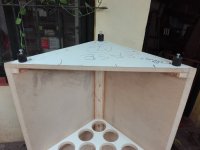 IMG_20190225_150906.jpg965.3 KB · Views: 60
IMG_20190225_150906.jpg965.3 KB · Views: 60 -
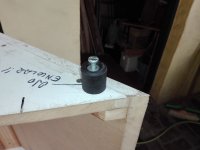 IMG_20190225_150729.jpg527.5 KB · Views: 53
IMG_20190225_150729.jpg527.5 KB · Views: 53 -
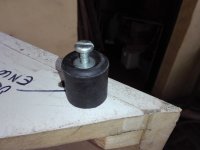 IMG_20190225_150717.jpg454.9 KB · Views: 53
IMG_20190225_150717.jpg454.9 KB · Views: 53 -
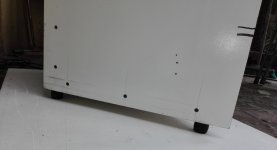 IMG_20190225_144936.jpg238.9 KB · Views: 56
IMG_20190225_144936.jpg238.9 KB · Views: 56 -
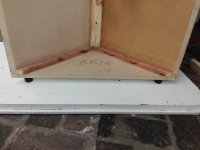 IMG_20190225_144912.jpg545 KB · Views: 162
IMG_20190225_144912.jpg545 KB · Views: 162 -
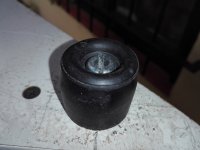 IMG_20190225_144430.jpg452.2 KB · Views: 160
IMG_20190225_144430.jpg452.2 KB · Views: 160 -
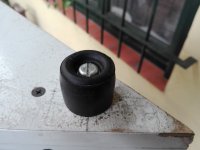 IMG_20190225_144412.jpg484.9 KB · Views: 163
IMG_20190225_144412.jpg484.9 KB · Views: 163 -
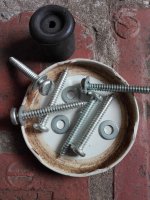 IMG_20190225_125324.jpg890.4 KB · Views: 164
IMG_20190225_125324.jpg890.4 KB · Views: 164
This speed regulator is an extraordinary invention, I have been using it for many years and it is still working perfectly. It cuts the phase of alternating current in pulses, hence the speed is reduced without losing torque. The first electric drills incorporated a simple rheostat that was a variable resistance, it was not very useful, since it attenuated the voltage and the motor lost strength. With the advance of miniaturization, these circuits have already been incorporated into current electric drills.
At one point I used a light dimmer, the circuit is the same and the first manufacturers used to encapsulate everything in epoxy resin to avoid copying it.
OP, sorry for the Off Topic ! 😀😉
https://articulo.mercadolibre.com.a...avW0aI74Vey7J2ynTZL3i8lhw_o2eq8gaAhOHEALw_wcB
At one point I used a light dimmer, the circuit is the same and the first manufacturers used to encapsulate everything in epoxy resin to avoid copying it.
OP, sorry for the Off Topic ! 😀😉
https://articulo.mercadolibre.com.a...avW0aI74Vey7J2ynTZL3i8lhw_o2eq8gaAhOHEALw_wcB
Attachments
Last edited:
Sorry, the photos do not correspond to the steps taken....😱😱🙂
I'm looking forward to how close measurements match the sims since from dim memory it's necessary to have > ~70% exposure in high aspect ratio cab shelf bracing, so curious how much, if any air mass resistance there may be.
GM
Emphasis mine - I assumed that "piston" referred to the moving area of the cone, ie SD in the TSP's, not the whole diameter of the chassis.
Correct.
GM
Well, the ends of the screws have been eliminated.
But it seems that the asphalt membrane that I need is difficult to get, because they all come with an aluminum layer.
This aluminum sheet has the advantage that it allows to mold it better on the surfaces when placing it.
On the negative side, it may not absorb the vibrations effectively because it is more rigid on the outside.
I would like to know your opinions about it, thanks in advance...🙂
This petroleum based 'asphalt' is like what I used on a sub back in the '90s and even though vented, it out gassed enough over time to damage the surrounds, glue joints, so do not recommend using it, especially for sealed.
The alum. layer makes it a constrained layer damping construction; very effective, though [multiple layers as required] of peel n' stick floor tiles is a cheap, easy variant, especially if you use the thicker rubber ones with appropriate adhesive like in some institutions.
GM
This speed regulator is an extraordinary invention, I have been using it for many years and it is still working perfectly.
Yeah, been using them to control soldering irons, Dremel type, engraving, etc., tools, fixed power supplies, etc., since the early '60s and all still working fine.
GM
I tried to explain the "C" in line with the voice coil.
""" The condenser in line with the speaker enables the speaker to take more power from the amplifier.
If fitted right, at a point where the impedance curve of the speaker in the cabinet rises to high resistance (resonance frequency), making the amplifier virtually "weaker", it reduces this effect.
This can NOT be done in the same way by some kind of equalizing before the power amps output!
The concept is too often misunderstood. Simulations give a good idea of the effect, but the final, "best" value of the condenser (around 1000 micro F usually) will best be tried out by measuring the output of the finished sub woofer. In my experience your are usualy +-200microF off with the simulation. """
So if it takes more power, because the impedance under the resonance frequency is lowered, of course the amp has to deliver more energy = power.
It is just the same concept that most have understood: an amplifier that is able to drive low loads will give a higher rms at 4 ohm´s than at 8 ohm´s. If the amp is stable, exactly twice the power with half the load resistor.
If you are concerned about "losses" in the condensor, have a look at the data sheets of electrolitics. You will be surprised how effective they are. In fact with usual measurements you will not see any above the calculated frequency. Most commercial speakers use bipolar electrolitc´s in their passive cross over network´s.
They are not worse than film capacitors.
""" The condenser in line with the speaker enables the speaker to take more power from the amplifier.
If fitted right, at a point where the impedance curve of the speaker in the cabinet rises to high resistance (resonance frequency), making the amplifier virtually "weaker", it reduces this effect.
This can NOT be done in the same way by some kind of equalizing before the power amps output!
The concept is too often misunderstood. Simulations give a good idea of the effect, but the final, "best" value of the condenser (around 1000 micro F usually) will best be tried out by measuring the output of the finished sub woofer. In my experience your are usualy +-200microF off with the simulation. """
So if it takes more power, because the impedance under the resonance frequency is lowered, of course the amp has to deliver more energy = power.
It is just the same concept that most have understood: an amplifier that is able to drive low loads will give a higher rms at 4 ohm´s than at 8 ohm´s. If the amp is stable, exactly twice the power with half the load resistor.
If you are concerned about "losses" in the condensor, have a look at the data sheets of electrolitics. You will be surprised how effective they are. In fact with usual measurements you will not see any above the calculated frequency. Most commercial speakers use bipolar electrolitc´s in their passive cross over network´s.
They are not worse than film capacitors.
There is a description (with graphs ;-) ) of how the capacitor helps in the write-up for one of Humble Homemade HiFi's boxes here: http://www.humblehomemadehifi.com/download/Humble Homemade Hifi_Black Box.pdf
but if it uses the same amount of power anyway, (for a given output at a given frequency) Surely may as well use a P-equalizer? ..and have more room to play and account for room and placement and such.
In my 15" Karlson's I used the same rubber (gum) feets, but soonly they became deformed. They melted with ambient heat. So I put plastic wheels, and with the advantage for easily of move to scand and remove back dust in the floor.
I tried to explain the "C" in line with the voice coil.
Thanks for the intention, I had already uploaded in the post 53 of this same thread two links that seem to be very illuminating about it, (although the second link I think exceeds many of us, these vectors are for electronic engineers, not for me , but the conclusion is interesting, I recommend reading it.
Here they go again.
Large capacitor in series with woofer -
Techtalk Speaker Building, Audio, Video Discussion Forum
Strassacker: Speaker Building, Components
Anyway, as I mentioned before, I will test the use of the capacitor in series when the subwoofer is in operation.
I'm looking forward to how close measurements match the sims since from dim memory it's necessary to have > ~70% exposure in high aspect ratio cab shelf bracing, so curious how much, if any air mass resistance there may be.
GM
I regret not being able to fulfill your wishes, friend, because there will be no measurements, only my ears will judge the result of this craft.
When the subwoofer is ready, I will gladly comment on the result (subjective, of course, but while I'm happy, I'll be happy, I'll be honest and if it's crap, 😱 I'll say it, you can trust me) 😀
PS:
See post 6, please.
Damping material
I'm interested in having an answer from you.😉
There is a description (with graphs ;-) ) of how the capacitor helps in the write-up for one of Humble Homemade HiFi's boxes here: http://www.humblehomemadehifi.com/download/Humble Homemade Hifi_Black Box.pdf
Thanks friend, maybe it does not apply exactly, although I understand your intention.
In my 15" Karlson's I used the same rubber (gum) feets, but soonly they became deformed. They melted with ambient heat. So I put plastic wheels, and with the advantage for easily of move to scand and remove back dust in the floor.
I will tell you that thinking about what you say, I have tightened the screws so that they penetrate a few millimeters into the rubber block, with the same weight as the box, the screws will also support. The idea of the wheels is very good, I want to do that with the DTQWTII, but as aesthetically they are horrible, I want to make a piece of the same finish as the cabinet, which covers it and is hidden from view.
Obviously I do not believe in miraculous spikes to improve sound.
Te diré que pensando en lo que vos decís, he apretado los tornillos de forma que penetren unos pocos milimetros dentro del taco de goma, con el peso mismo de la caja, los tornillos harán de soporte también. La idea de las ruedas es muy buena, yo quiero hacer eso con los DTQWTII, pero como estéticamente quedan horribles, quiero hacer una pieza de la misma terminación que el gabinete, que la recubra y quede escondida a la vista .
Obviamente no creo en las spikes milagrosas para mejorar el sonido.
This petroleum based 'asphalt' is like what I used on a sub back in the '90s and even though vented, it out gassed enough over time to damage the surrounds, glue joints, so do not recommend using it, especially for sealed.
The alum. layer makes it a constrained layer damping construction; very effective, though [multiple layers as required] of peel n' stick floor tiles is a cheap, easy variant, especially if you use the thicker rubber ones with appropriate adhesive like in some institutions.
GM
You are right, although the asphalt (which is the lag of oil distillation) in the membrane is dry, to apply it I thought to melt it using a heat gun (it is not recommended to use a torch inside a wooden cabinet, right? ) can then release gases again, and in a sealed cabinet is counterproductive to the speaker as you say ...
There is the possibility of using water-based liquid asphalt, and sprinkle it with sand, several layers are applied until it takes shape ... do you have experience with this method?
I have read that it is a very good antiresonant procedure.
Last edited:
I presume this is a rhetorical question unless making it from petrified wood. 😉
I've sand, Portland cement, finely crushed rock, marble, slate powder, melted down old wheel weights, etc., loaded latex paint, though not all for speaker cabs and even mixed the heaviest stuff with old 90w gear oil for metal pipe legs, but only the one time using just roofing cement out of curiosity.
Apparently sub cabs can get hot enough internally to cause out-gassing of this so called 'dry' product over time when played at ~300 W peak power handling levels or at least the cheap brand I used.
Then again, if not driven hard in a high ambient, might work fine for decades for all I know, but why gamble when there's other potentially cheaper, more environmentally safer ways to do it?
GM
I've sand, Portland cement, finely crushed rock, marble, slate powder, melted down old wheel weights, etc., loaded latex paint, though not all for speaker cabs and even mixed the heaviest stuff with old 90w gear oil for metal pipe legs, but only the one time using just roofing cement out of curiosity.
Apparently sub cabs can get hot enough internally to cause out-gassing of this so called 'dry' product over time when played at ~300 W peak power handling levels or at least the cheap brand I used.
Then again, if not driven hard in a high ambient, might work fine for decades for all I know, but why gamble when there's other potentially cheaper, more environmentally safer ways to do it?
GM
- Home
- Loudspeakers
- Subwoofers
- Eminence Delta Pro 18 A in prism sealed 150 liters
